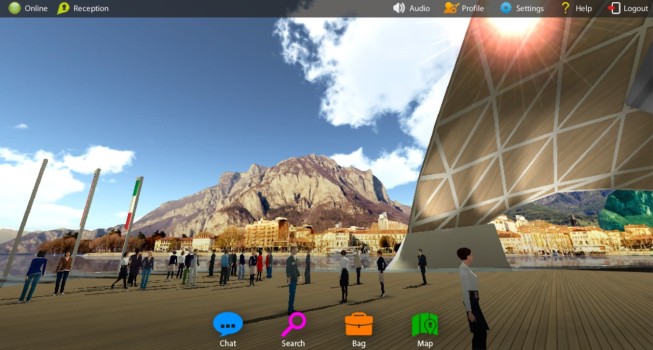 [1]
[1]A new study predicts “by 2016, half of doctors will be using online and virtual platforms to earn online continuing medical education credits. [2]
Such a radical increase — in 2008 numbers put online continuing medical education at 7 to 9 percent – can be easily explained looking at the incredible technological advancements of the recent years.
3D immersive virtual environments have finally brought lifelike interactions and dynamism to otherwise static online events. The medical community has been at the forefront of this revolution, seeing its potential from the start and implementing the latest technologies to bring high-quality education to as many professionals as possible, which in turn translates into better and more efficient care globally.
 [3]
[3]In developed countries such as the US, medical doctors and healthcare professionals are required to attend seminars and programs to be always up-to-date. Participating to online virtual events provides these credits, which explains why the attendance is so high.
Virtual events are more cost efficient, as they can be accessed from any computer, cutting down on travel expenses, they are eco-friendly, undeniably a trend in continuous growth, and they facilitate international cooperation.
In developing countries, doctors and nurses often struggle with finding the appropriate level of training, which results in a tragic shortage of skilled health professionals, as it emerges from a report from the World Health Organization [4]. In reaction, online medical education is becoming a priority for organizations that want to improve this situation, such as universities, government health agencies and NGOs.
 [5]
[5]In the medical field education begins at university, but due to the continuing advancements brought by scientific research it never stops there. Continuing medical education programs need to be in place to help professionals navigate these discoveries without forcing them to neglect their practice. As a result many universities have turned to “e-learning tools like webcasts and online study aids to broaden enrollment and improve educational outcomes. [6]â€
Two notable examples are the University of Washington’s Department of Global Health with its eDGH [7] program, which currently reaches students in more than 30 countries, and a Harvard Medical School-affiliated NGO called HAIVN, [8] fighting HIV in over 20 provinces in Vietnam. The first program is more geared towards students, pioneering the format of blended learning, while the second is more aimed at professionals.
Emerging countries don’t always require continuing medical education, and therefore don’t provide it, and many healthcare professionals are turning to online platforms to remedy to this shortcoming. A 2013 survey by Eldeman Indonesia [9] shows that Internet resources are being regularly used by over 75 percent of doctors in major cities as a way to further their training.
Watch the Hyperfair demo video below.
This article reprinted with permission from the Hyperfair Blog [10].